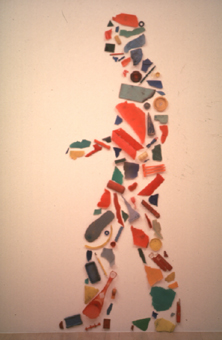
"BEAUTY IS NOT SOMETHING CALM AND REASSURING, ORDERLY AND RATIONAL-
GREAT BEAUTY STIRS US AT VERY DEEP LEVELS ".
I agree with this statement, it is an idea which forms the basis for my artwork. Harry Eyers conveys his statement in a clever and original way:
He points out that the conventional sense of beauty is not always true to the heart. In fact he states that there is something much more compelling, much more powerful and which is not readily recognised. He speaks of this unsettling idea and the connection between terror and beauty. To covey this he refers to the play, "ACTAEON".
THE YOUNG HUNTSMAN STUMBLES UPON THE GODDESS, ARTEMIS, WHILE SHE IS BATHING AND IS INSTANTLY SMITTEN! ARTEMIS, OR DIANA HAPPENS TO BE THE GODDESS OF CHASTITY AND HUNT. ACTAEON( the hunter) BEING MORTAL OUGHT HAS MADE A HUGE MISTAKE IN SEEING HER NAKED! THE GODDESS CHANGES HIM INTO A STAG! AND THEN SETS HIS OWN HOUNDS UPON HIM!!! TUT! TUT!













